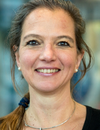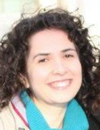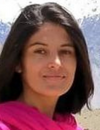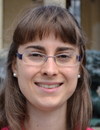Subsurface Hydrology

Research Focus
Subsurface water constitutes an important component of many water resource systems, supplying fresh water for domestic use, for industry and for agriculture. Management of subsurface water needs reliable predictions of the total amount of available water but also of water quality. Subsurface hydrological models are a valuable tool to deliver that information. Our group has the aim to develop regional subsurface hydrological and solute transport models that on the one hand take into account subsurface heterogeneity that typically ranges from meter to kilometer scales but on the other hand are simplistic enough to be part of our mesoscale hydrological model system mHM. Our strong expertise in multiscale methods -ranging from homogenisation, stochastic to spatial filtering methods - helps to link complex small scale models with simplistic regional descriptions.
Group Members
Prof. Dr. Sabine
Attinger
Masooma Batool
Dr. Mariaines
DiDato
Eshrat Fatima
Timo Houben
Dr. Rohini Kumar
Dr. Fanny
Sarrazin
Dr. Lennart
Schüler
Projects
Water Quantity
- Groundwater parameterization at the regional scale >> Details will follow soon.
- Groundwater@LandTrans >> Details will follow soon.
- AquaDiva: Modelling Catchment Dynamics Using Travel-Time Distributions
Water Quality
Excessive Nitrogen (N) surpluses that mainly arises from large usages of agrochemicals (inorganic fertilizers) is a persistent and widespread problem in agricultural areas, leading to subsurface pollutions (soil and groundwater) and eventually deterioration of the surface/subsurface water quality. N levels can depend not only on current N inputs to the landscape, but also on the past N that have accumulated through time in the soil root zone and the groundwater in so-called ‘legacy stores’. We aim to enhance the representation water and solute (in particular nitrate) transport in regional-scale models. We account for the large uncertainties in the modelling results, due to the uncertainties in N inputs to the system, the uncertainties in process representation in models and the lack of N observational data to constrain the simulations. The major projects we are currently working on are described below:
- mQM@LandTrans: Development of a grid-based distributed nitrogen model.
- ELEMeNT: Parsimonious catchment-scale nitrate modelling
- GlobeWQ: Global Water Quality Analysis and Service Platform
Project Members: Sabine Attinger , Rohini Kumar , Fanny Sarrazin , Masooma Batool
Short Project Descriptions
AquaDiva: Modelling Catchment Dynamics Using Travel-Time Distributions
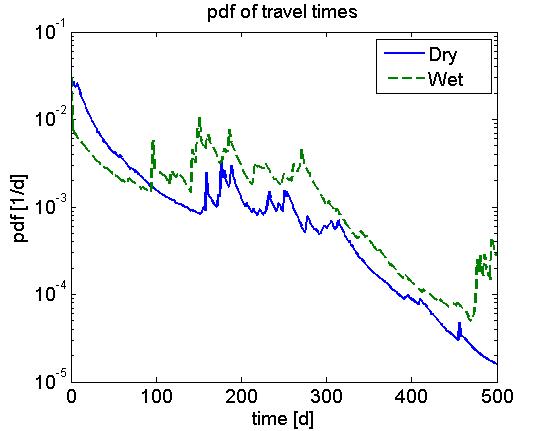
The collaborated research centre (Sonderforschungsbereich) AquaDiva is dedicated to the investigation of how surface conditions and geology influence the functional biodiversity of the subsurface. Within this centre we are tasked with modelling the water and energy movement through the subsurface.
To that end, we apply the mesocsale Hydrological Model
mHM
, a spatially distributed hydrological model to the catchment of the AquaDiva observation site. Using detailed data of precipitation, land cover, morphology and soil type as inputs, mHM can determine fluxes like recharge and evapotranspiration and states like soil moisture as outputs.
Using these data, we apply the analytical framework developed by Botter et al. [2010, WRR] and Van der Velde et al. [2012, WRR] to quantify how the catchment stores and releases water. This allows for a description of the flow and transport dynamics taking place in the catchment. The spatial distribution of such dynamics can then be compared with land cover and soil moisture maps as well as driving forces like precipitation and temperature. Additionally we can determine the temporal evolution of mean travel times by using time series of all relevant hydrological processes from 1960-2010.
Contact: Falk Hesse , Sabine Attinger
mQM@LandTrans: Development of a grid-based distributed nitrogen model
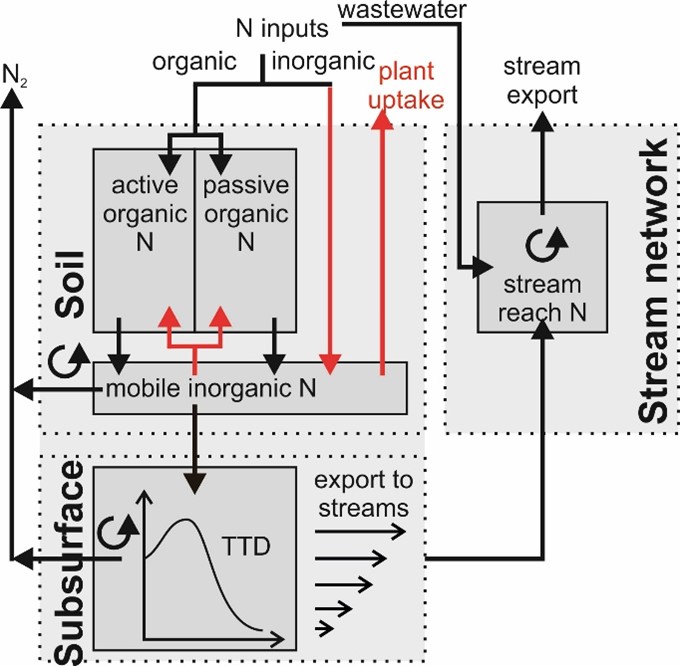
Many current Nitrogen (N) transport models lack a representation/testing of the N legacy component. In addition, nitrate model that represent legacies do not have a fully spatially distributed representation.
We are developing the multiscale water Quality Model (mQM) that aims to represent the spatially explicit dynamics of the fact of the N surplus in the terrestrial part of the earth system (soil, subsurface, stream) and over long-time scales, while accounting for both hydrological and biogeochemical legacies. The model conceptualization and parameterization incorporate the relevant N processes, while trying to limit the complexity considering the data availability. We ensure that the modular feature of the model code allows multi-parameterization and seamless integration of new processes and that the model is under a git versioning system. mQM will be coupled to the multiscale hydrological model mHM.
Contact: Sabine Attinger , Rohini Kumar , Fanny Sarrazin , Masooma Batool
ELEMeNT: Parsimonious catchment-scale nitrate modelling
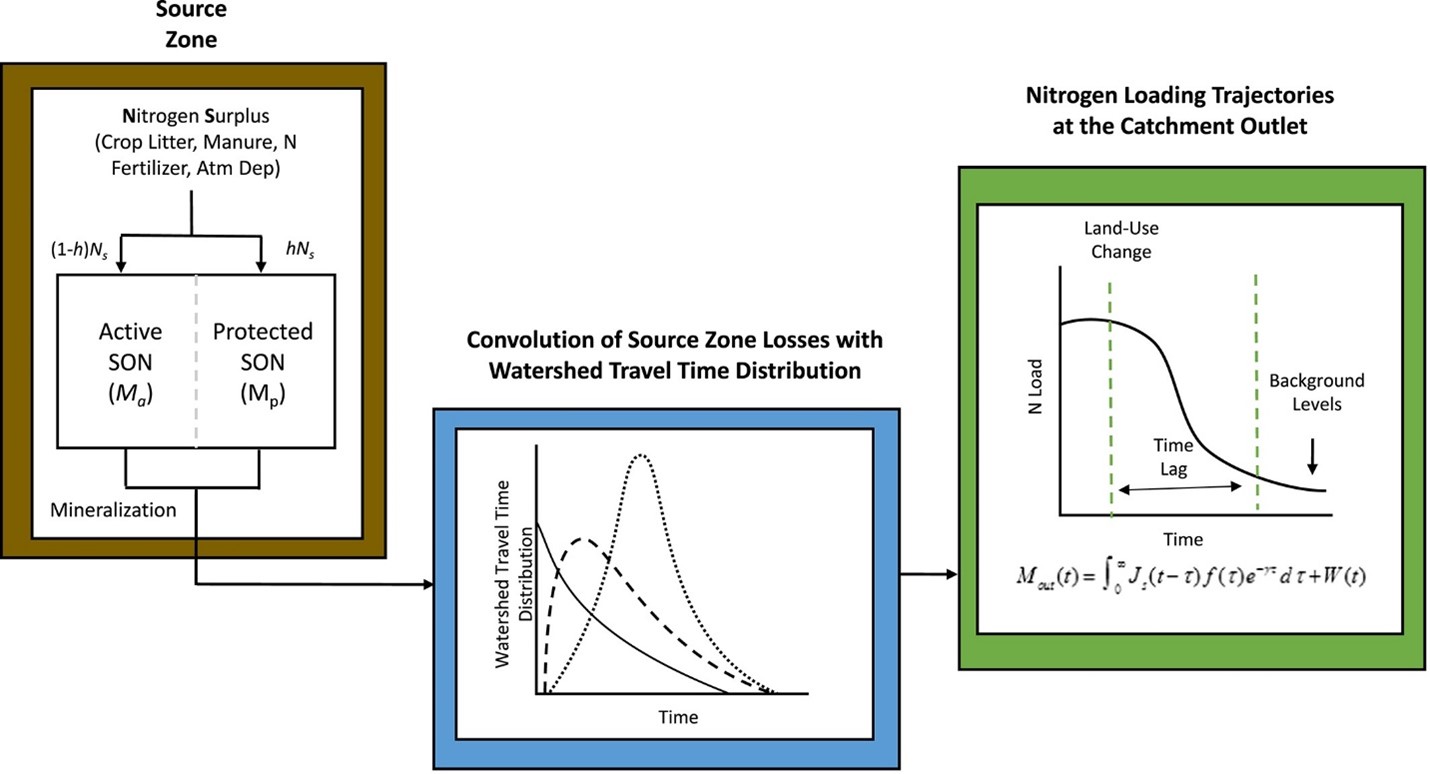
We lack an understanding of the magnitude of the Nitrogen (N) legacies and their associated time scale, in particular in Europe. It is also unclear which (observational) data can help to reduce the uncertainty in the simulated N legacies.
We aim to investigate through modelling the long-term fate of the N inputs to the landscape, i.e. whether N is stored in soil root zone in organic forms, in the subsurface in dissolved inorganic forms, denitrified or exported to the stream, and its uncertainties. To the end, we estimate the model parameters using soft rules, to assess parameter uncertainty and the value of the different observational data available. We perform a sensitivity analysis to determine the factors responsible for the (residual) uncertainty in the simulated N legacies to prioritize future efforts for uncertainty reduction and model improvement.
We use a parsimonious catchment-scale N model called ELEMeNT (Exploration of Long-tErM Nutrient Trajectories, Van Meter et al., 2017, Global Biogeochem. Cycles), given that available information to constrain the model a is limited and has large uncertainties. We examine the Weser river basin, which is Germany's largest national river basin.
Partner: Nandita Basu, University of Waterloo, Canada; Kim Van Meter, Pennsylvania State University, US
Contact: Sabine Attinger , Rohini Kumar , Fanny Sarrazin , Masooma Batool
GlobeWQ: Global Water Quality Analysis and Service Platform
Investigating the build-up of N legacy stores within terrestrial ecosystems over a long time-scale is a fundamental step to understand the driving forces that can reduce nitrate levels. We contribute towards improved assessment of water quality (N) status across European River systems through both observational and modeling approaches within the pilot project “Global Water Quality Analysis and Service Platform (GlobeWQ)”. GlobeWQ is embedded in the World Water Quality Alliance led by the UN Environment Programme with the challenging task to compile a World Water Quality Assessment by 2023 on current and future freshwater quality. The project is a direct continuation of a pre-study that resulted in a snapshot of world's water quality and a roadmap for a worldwide assessment.
Our aims within the scope of project are to understand the long-term trajectory of the different constituents of the Nitrogen surplus at regional scale and to study the long-term effect of the dynamics of the Nitrogen legacy stores on stream nitrate levels. We are collecting, processing, harmonizing and constructing the gridded long-term N surplus datasets based on the established theory; however, the novelty is to combine the different sources of information to create a harmonized dataset across Europe, while explicitly accounting for uncertainties. We also focus on disentangling different N-components (like diffuse vs. non- diffuse sources) and their changing dynamics across European River system. By doing so, we contribute to support the design of effective management strategies to reduce nitrate levels and thus reach a good ecological status of the water bodies.
Contact: Sabine Attinger , Rohini Kumar , Fanny Sarrazin , Masooma Batool
Former Projects
Determining statistical parameters of aquifer heterogeneity from pumping test data
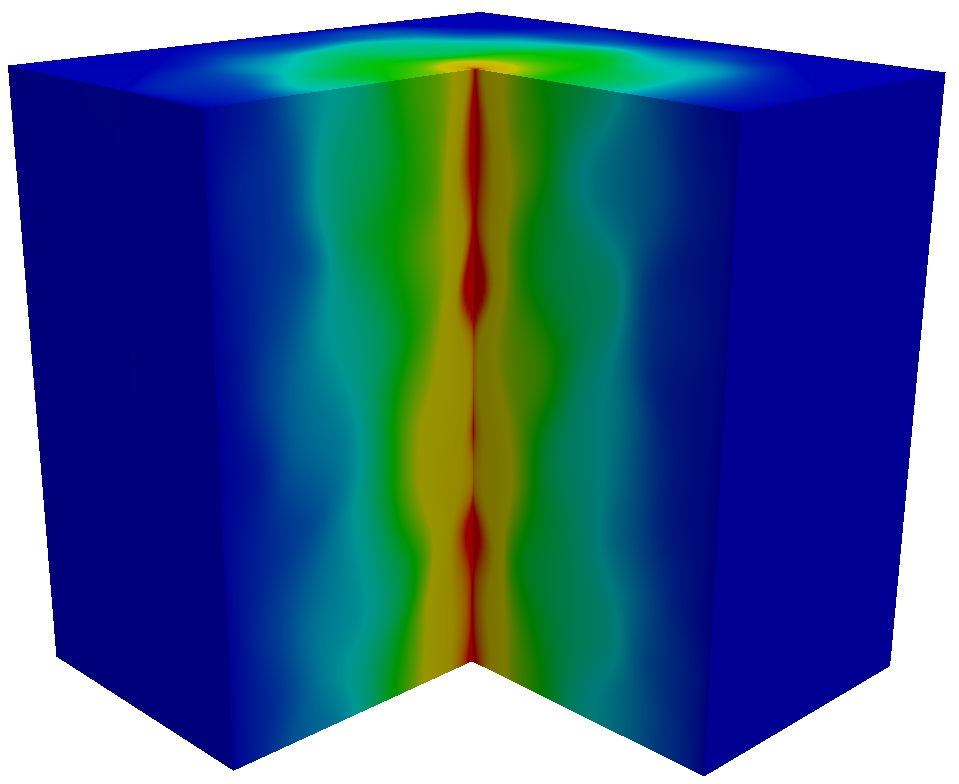
We develop new schemes for interpreting pumping tests in heterogeneous aquifers by making use of adaptive multi-scaling techniques (Coarse Graining). Usually, the heterogeneous character of aquifers prevents a consistent interpretation of pumping tests based on Thiem's or Theis formula, since interpreting the aquifer as an equivalent homogeneous aquifer fails. The reason for this failure lies in an increased impact of heterogeneities due to steep gradients of the water flux close to the pumping well. Adaptive coarsening strategies allow for resolving steep gradients in adequate resolution.
The methods, we are developing allow to describe the drawdown of a pumping test in heterogeneous aquifer effectively. Thereby, we derive analytical or semi-analytical solutions for both steady state and transient pumping test in two and three dimensional porous media. In combination with numerical pumping tests we determine the ability of our approach to predict parameters of aquifer heterogeneity by inverse estimation. Furthermore we aim to adapt the procedure to conditions comparable to field site investigations. Sensitivity analysis indicate how accuracy and uncertainty of estimated parameters correlate to number and spatial distribution of head measurements. Thus heterogeneous structures of the aquifer can be identified.
Project Members:
Alraune Zech
,
Sebastian Müller
,
Sabine Attinger
A Filtered Density Function Approach to Uncertainty Assessments for Reactive Transport in Heterogeneous Porous Media
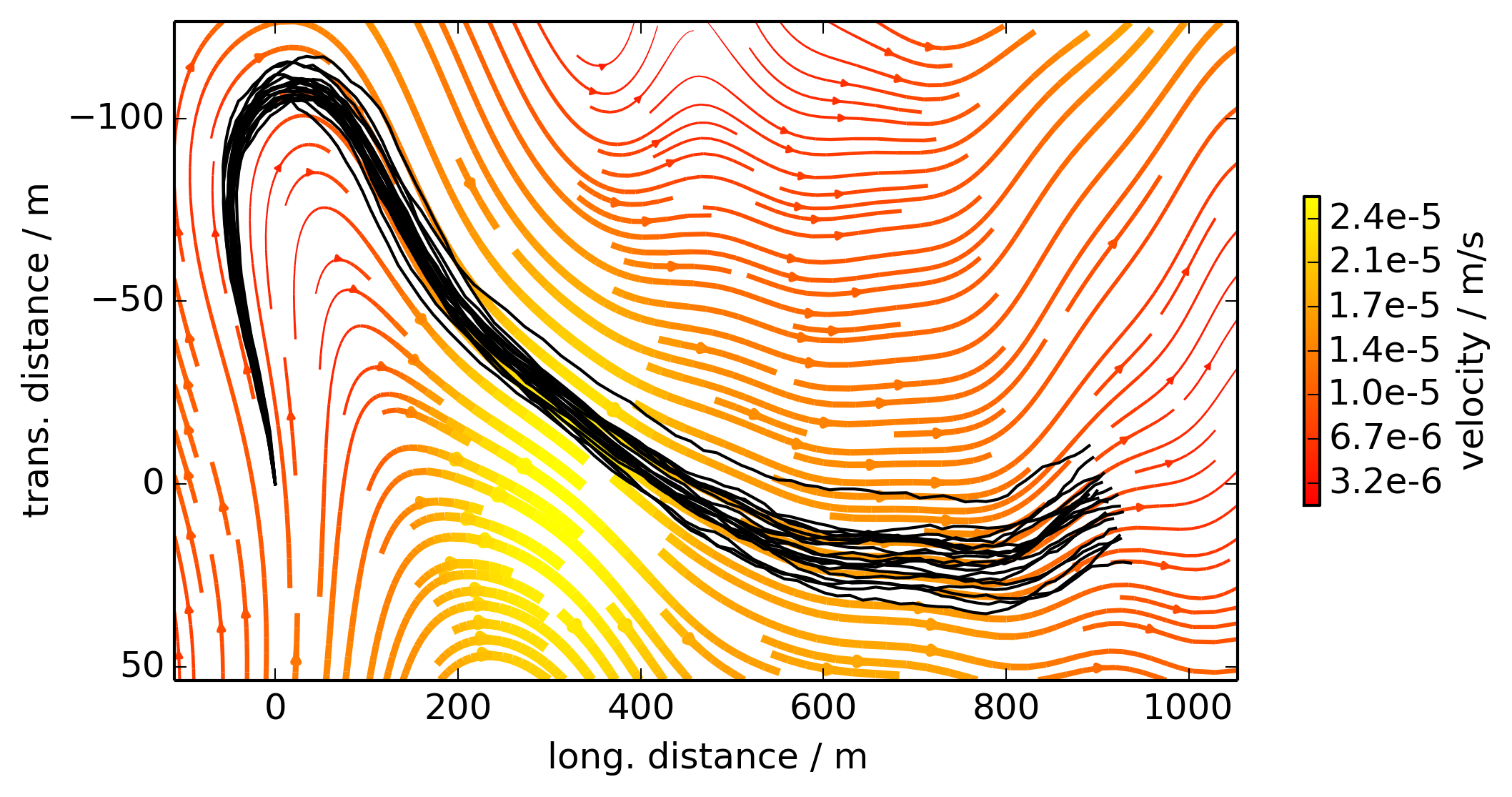
Modelling contaminant transport in heterogeneous aquifers is a challenging task. The range of problems include the dominant role of mixing on reactive processes and the quantitive description of chemical kinetics.
The probability density function (pdf) approach has promising properties allowing to overcome most of these problems. Non-linear reaction terms appearing in the pdf evolution equations can be treated exactly and without any assumptions, for instance. Taking advantage of the pdf approach for flow in heterogeneous porous media we aim to derive an evolution equation for the pdf of groundwater flow.This derivation implies upscaling of equations by the coarse graining procedure.
With this work we hope to develop a robust tool for groundwater contamination risk assessments.
Project Members:
Lennart Schüler
,
Sabine Attinger
Theory and interpretation of transport experiments and field scale dispersivity
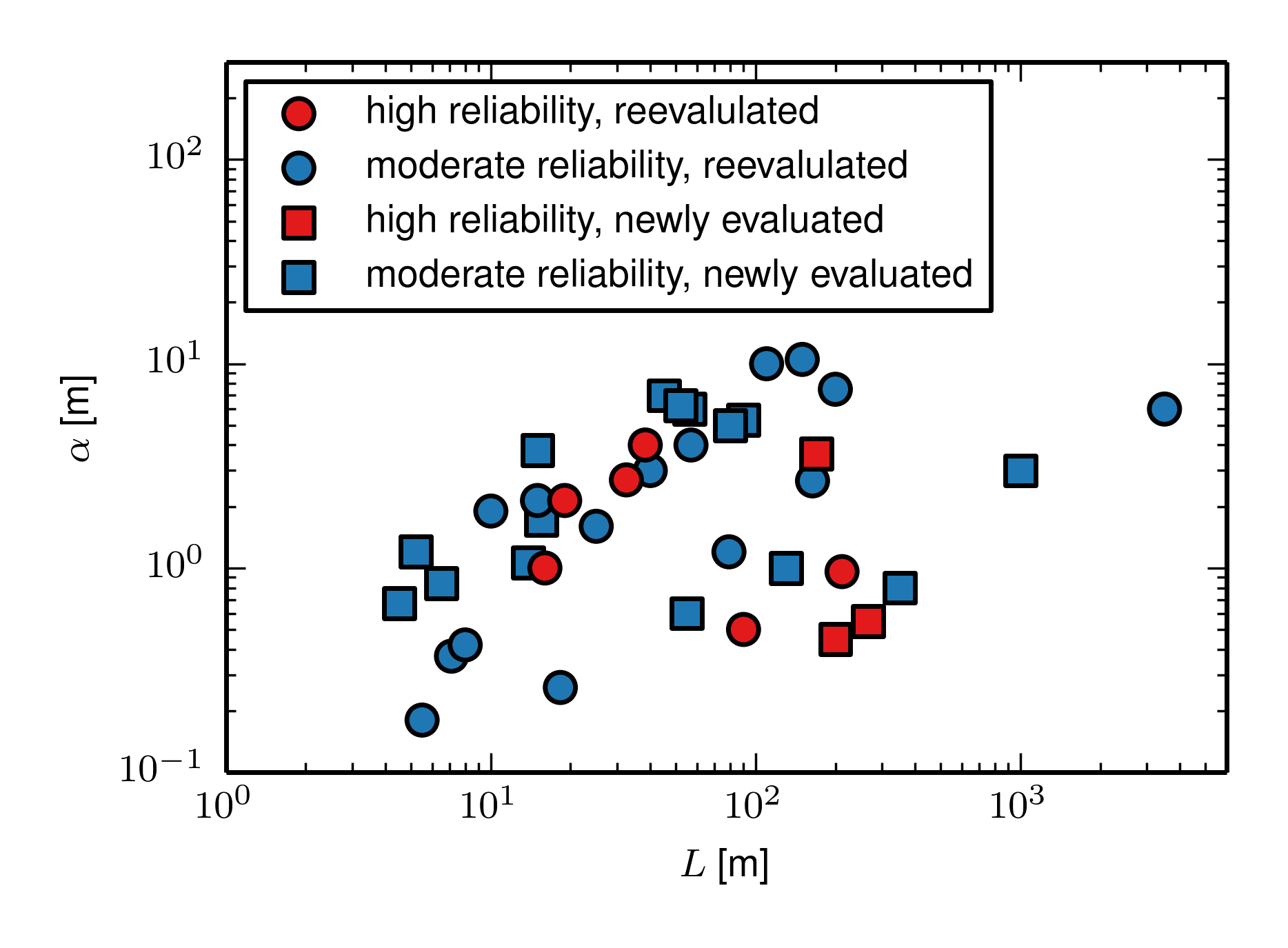
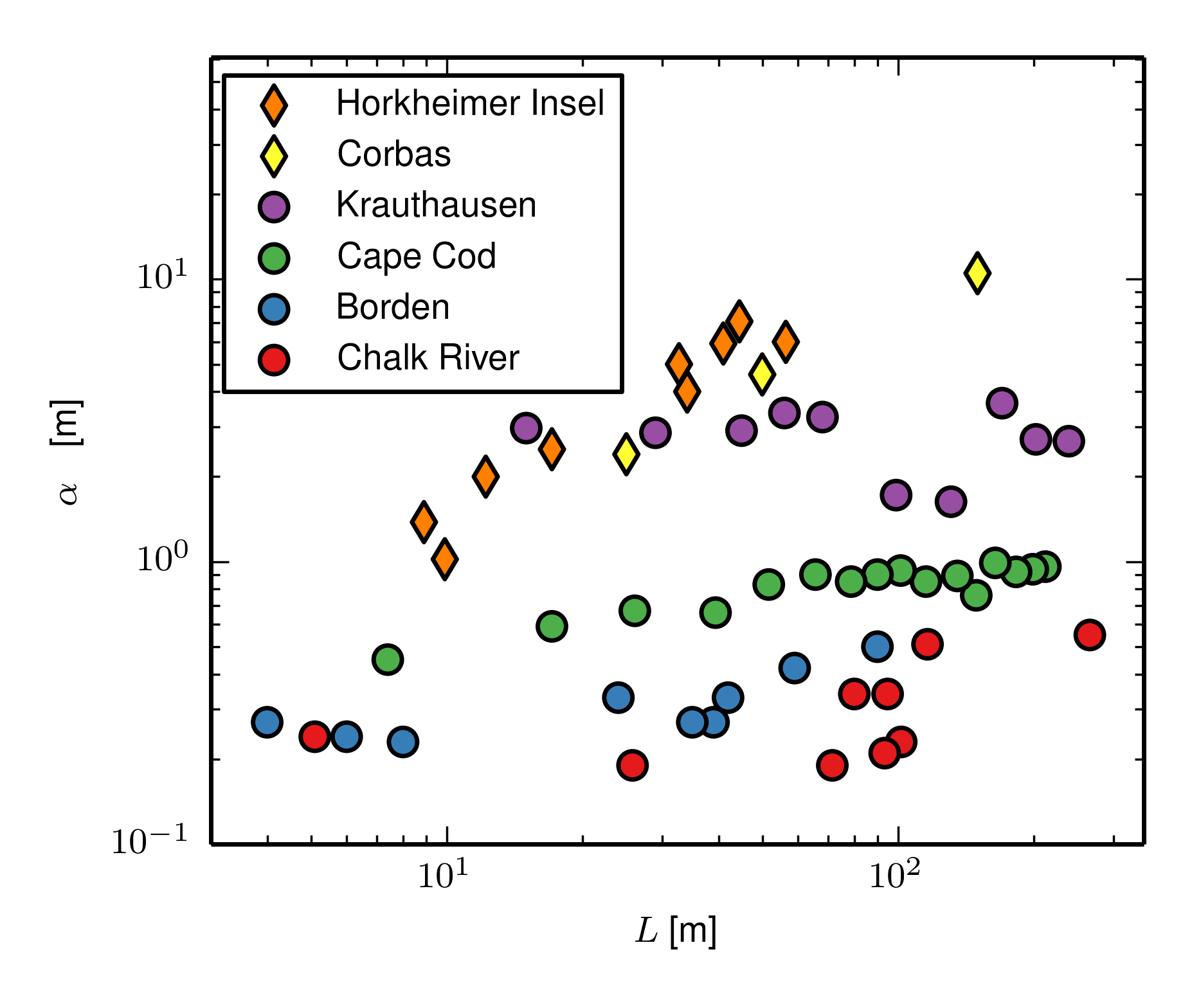
Transport by groundwater occurs over the different scales encountered by moving solute plumes. Spreading of plumes is often quantified by the longitudinal macrodispersivity α. It was found that generally α is scale dependent, increasing with the travel distance L of the plume centroid, stabilizing eventually at a constant value (lower Figure).
It was surmised in the literature that α scales up with travel distance L following a universal scaling law. Attempts to define the scaling law, including theoretical justifications, were pursued by fitting a regression line in the log-log representation of results from an ensemble of field experiment, primarily those summarized by Gelhar et al, 1992. Despite concerns raised about universality of scaling laws, such relationships are being employed by practitioners for modeling multiscale transport. They, presumably, offer a convenient prediction tool, with no need for detailed site characterization.
We revisited the concept of universal scaling through detailed analyses of field data, coupled with a thorough re-evaluation of the reliability of the reported α values. Our investigation concludes that transport, and particularly α, is formation-specific, and that modelling of transport cannot be relegated to a universal scaling law. Instead, transport requires characterization of aquifer properties, e.g. spatial distribution of hydraulic conductivity, and the use of adequate models.
Project Members:
Alraune Zech
,
Sabine Attinger
, Alberto Bellin, Vladimir Cvetkovic, Gedeon Dagan,
Peter Dietrich
, Aldo Fiori, Yoram Rubin, Georg Teutsch
Hydrological Models and Scaling Effects
The subsurface is affected by high heterogeneity at different spatial scales, from meter to kilometer scales. For this reason, the parametrization of subsurface hydrological models has been recognized as a crucial step for a correct prediction of water flux and transport. More recently, with the advance in computing science and the development of fully coupled hydrological models, it was further emphasized the need of a unified framework to cross and integrate the results obtained from several disciplines, in hydrogeology, soil hydrology and surface hydrology.
Aim of the project is to identify the scaling effects for different hydrological processes, from groundwater recharge to surface run off, to quantify the uncertainty due to unresolved heterogeneity and, finally, to develop a unified data assimilation framework that takes into account different variables (e.g., river discharge and soil moisture) to improve the model performances.
The integrated hydrological model Parflow.CLM is used for these aims. Numerical tests are implemented at different temporal and spatial scales, ranging from hillslope to catchment scales. Specific analyses are conducted based on a virtual reality that mimics the Neckar catchment (Germany). Simplifications of the model complexity are evaluated to define features to integrate in conceptual hydrological models.
DFG project: FOR2131
Partners: University of Bonn, Forschungszentrum Jülich (FZJ), Hannover University, University of Tübingen, University of Hamburg, University of Augsburg.
Project Members: Gabriele Baroni, Sabine Attinger
Groundwater simulations in the Thuringian Basin

Salty groundwater reaching the surface or coming close to it is a phenomena that can be observed in many places of the Thuringian Basin. However, it is not obvious, why denser brine overlays lighter fresh water in this region. The hydrogeological processes which cause the rising of saltwater plumes from deeper geological layers to the surface are not yet fully understood. The goal of out modeling project is to investigate the mechanism of brine transport within the aquifers of sedimentary basins in general and of Thuringian Basin in particular.
For our numerical investigations we use a cross section of the Thuringian basin of approximately 80km length and maximal 800m height. The hydrogeological model is based on the major stratigraphical units from upper Perm (Zechstein) to upper Triassic (Keuper) with the lower Triassic (Bundsandstein) formations representing the main aquifer. To investigate hydrogeological scenarios we use the groundwater simulation program OpenGeoSys, which allows us to calculate thermally, hydrologically and chemically coupled processes. The challenge for us is to include aquifer heterogeneity and density driven flow as a numerically very sensitive processes on a grid that represents a large scale geologically realistic setting.
Project Members: Alraune Zech , Thomas Fischer , Sabine Attinger , Olaf Kolditz
Stability studies in density-driven systems


These studies were undertaken in the project E-DuR, an acronym for Weiterentwicklung der Rechnprogramme d3f und r3t. This completed project was funded by the German Federal Ministry of Economics and Technology (BMWi) (contract number 02E-10316). It was a cooperation effort between the Universities of Jena, Freiburg (Prof. Dr. D. Krön), Bonn (Prof. Dr. M. Rumpf), Heidelberg (later Frankfurt am Main) (Prof. Dr. G. Wittum) and GRS (Dr. A. Schneider), the organisation responsible for the safety of nuclear facilities in Germany. The project investigated the long-term behaviour of nuclear waste stored in geologic formations.
A simulation package d3f was extended for application in density-driven systems. Transport in such systems is motivated by density differences that can arise from salinity (haline) or temperature differences, or both (thermohaline). Such systems occur in many practical instances like the migration of leachate at refuse dumps, seawater intrusion in coastal drinking-water aquifers, geothermal energy exploitation and waste disposal in geologic formations.
The group at Jena used the homogenization theory upscaling technique to develop a dimensionless number that scaled the effects of several physical variables in density-driven transport. We undertook multi-scale studies where the large-scale behaviour of the system was inferred after perturbations had been introduced at the small scale. For haline systems, we could accurately predict the onset of fingering instabilities but also derived expressions for the temporal evolution of macroscopic transport coefficients in heterogeneous formations.
For thermohaline systems, we used a setting applicable to sedimentary basins and geologic-formation waste storage where heat and solute transport induce opposing buoyancies. We could predict when the thermal buoyancy that tends to transport the stored waste to the surface predominated over the negative solutal buoyancy that tends to stabilise the waste.
Project Members: Jude Musuuza, Sabine Attinger
The estimation of large-scale transport coefficients in fractured porous media
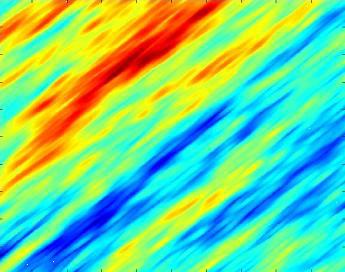
This work was undertaken under the project Abbildungen von Inhomohenitäten bei der Strömungs- und Transportmodellierung mit d3f und r3t (A-DuR), also funded by the BMWi, contract number 02E-10558 and was a cooperation between the Universities of Jena, Frankfurt am Main, the GRS, the private firm STEINBEIS-Forschungszentrum (Dr. M. Heisig) and the group of Prof. Dr. Olaf Kolditz at the UFZ Leipzig. It investigated the transport of solutes in fractured formations and specifically, the safety of nuclear material stored in geologic formations. The formation is conceptualised as a low-permeability host in which high-permeability zones are embedded to represent fractures.
The fractures could be of large spatial extents and oriented in a dominant direction (of faulting) and able to provide preferential flow paths. The fractures then contribute to the advective transport regime. They could also be very small in spatial extent and be individually oriented in many different directions. They are then called fissures and the regions where they are located generally conform to the orientation of faulting lines. This is an example of the so-called fractal media and the fissures mainly contribute to the diffusive transport regime.
Our group developed techniques for representing large fractures as lower dimensional, to reduce the computational effort and the data requirements. We also developed a code for generating fractal fields, to be incorporated into the d3f simulator mentioned previously. We also derived expressions from which one can study the temporal behaviour of transport coefficients in fractal media but also in media with large fractures. We also used the multi-scale techniques based on the coarse-graining method to derive expressions for transport coefficients for a medium embedded with both large fractures and fissures.
Project Members: Katharina Ross,
Sabine Attinger
From microbes to landscapes - Simulating microbial activity on different scales

Observed natural attenuation of groundwater pollution is predominantly the macroscopic expression of the metabolic activities of microorganisms. The aim of this project is linking microbial degradation rates on the macroscale to processes on the microscale and to the parameters describing these microscale processes. To this end, we propose a new multi-scale scheme ("gap-tooth-scheme").
Project Members:
Falk Hesse
,
Sabine Attinger
, Florin Radu,
Martin Thullner
, Sascha Oswald
Development of multiscale schemes ("gap-tooth-schemes") for modeling water cycle processes (together with Dr. Giovanni Samaey, University of Leuven)
We develop a framework for multiscale computation which enables models at a small scale level of description, for example physically based spatially distributed hydrological models, to perform modeling tasks at larger scales of interest. The plan is to use physically based flow equations for water and energy but restricted to small patches ("teeth") of the much larger domain at regional scales, followed by interpolation of estimated macroscopic fluxes of energy and water in the "gaps".
Project Members:
Sabine Attinger
Modeling the impact of environmental chemicals on immune cell differentiation
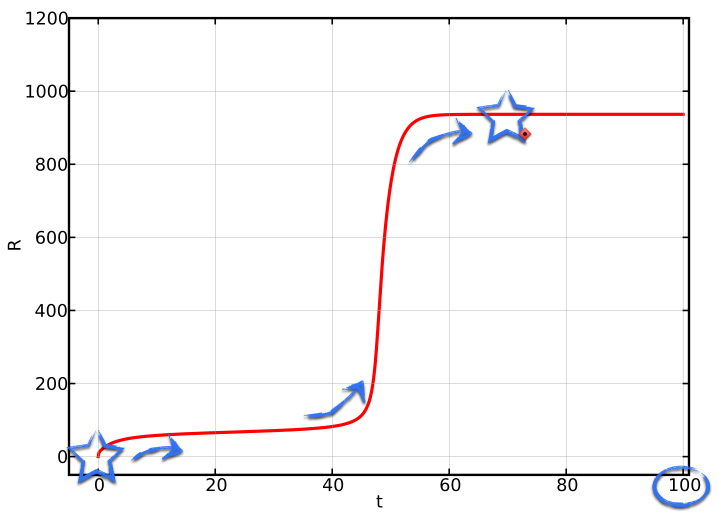
Differentiation processes of the immune system's cells have been shown to be affected from several environmental factors. Yet the underlying mechanism behind the differentiation processes of the T lymphocytes cells remain elusive.
Here we combine a mathematical model based on ordinary differential equations with experiments in order to investigate the influence of parameters in biological models. We perform a global sensitivity analysis to identify the parameters which have a major impact on the model. We find the feasible ranges of each parameter discovering those that influence the model most.
The present findings allows to underlying the importance of a prior sensitivity analysis in order to increase the efficiency and reliability of a parameter inversion of complex models and therefore reduce the experimental efforts.
Project Members: Giovanni Dalmasso,
Sabine Attinger
, Juliane Mai
Modeling distribution and interaction of contaminants in cellular environments
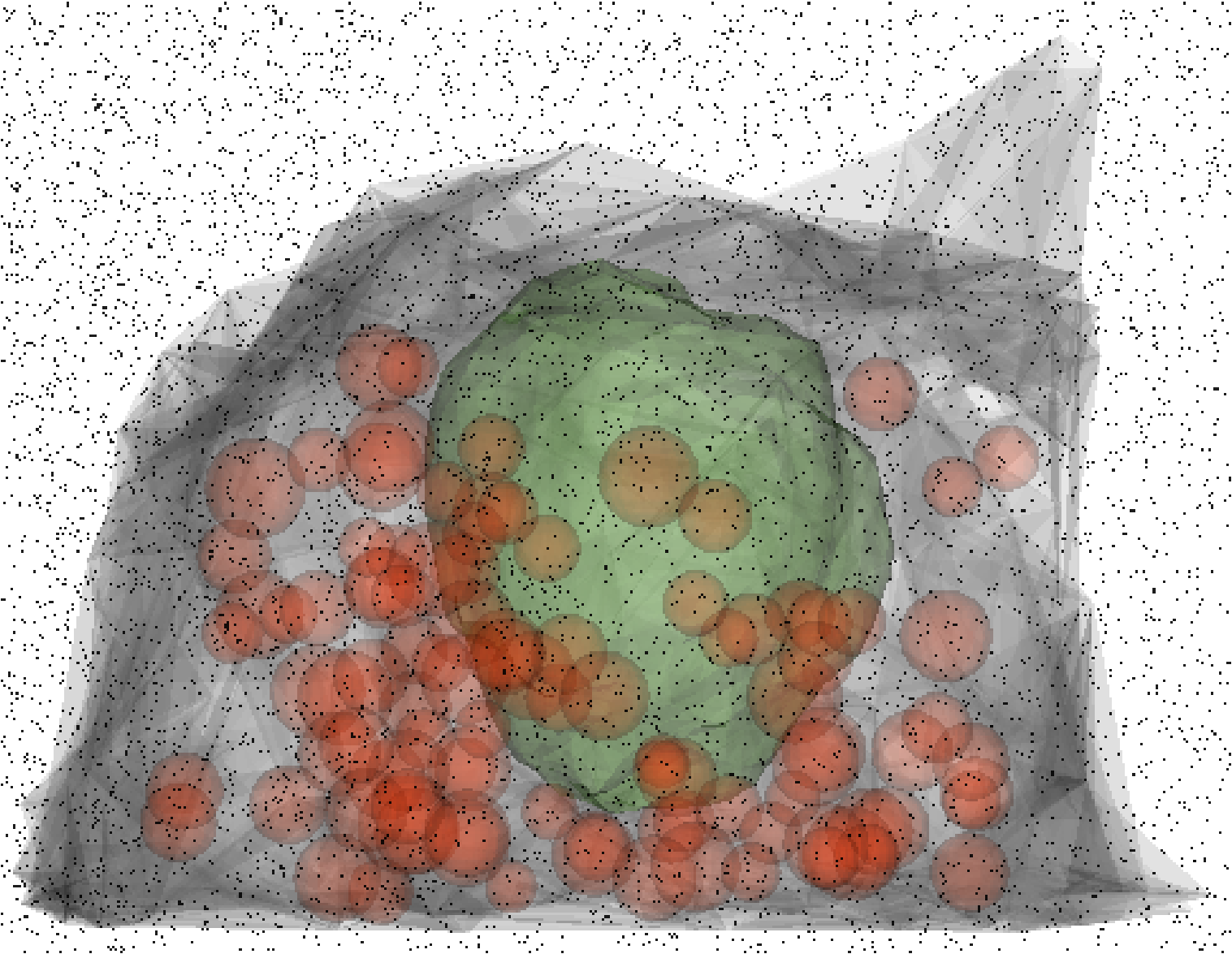
Polycyclic aromatic hydrocarbons (PAHs), such as benzo[a]pyrene (BaP) represent an important class of environmental contaminants. PAHs are ubiquitous contaminants derived from tobacco smoke, automobile exhaust or incomplete combustion of organic matter in general. They exert a wide range of toxic effects including carcinogenic, immunosuppressive or pro-inflammatory responses. PAHs are known ligands of the aryl hydrocarbon receptor (AhR) signalling pathway. AhR is a ligand activated transcription factor important for detoxification of environmental agents, toxicology, the induction of inflammatory signals or the oxidative stress response.
Some central aspects of the AhR signalling pathway are understood: contaminants enter the cell, distribute in the cytosol and different cellular organelles and interact with the cytoplasmic AhR. Binding to the AhR triggers translocation of the receptor/ligand complex to the nucleus, the association with the AhR nuclear translocator and the interaction with xenobiotic responsive elements (XREs) at the DNA. This usually leads to enhanced expression of a number of genes, which are presumed to play a major role in deleterious effects of PAHs. In spite of this general knowledge of AhR-mediated signalling, little is known about the dynamic behaviour of AhR upon activation.
We observe the behavior of the cytoplasmic AhR as well as the AhR-complex inside the nucleus in living cells. We applied the Fluorescence Recovery After Photobleaching (FRAP) method which is a well known and widely used experiment to investigate parameters of motion and interaction. Within this work we present a general method to analyse FRAP data without using pre-assumptions. We applied the method to artificial datasets as well as real measurements on AhR. The analysis of the AhR measurements e.g. lead to predictions on concentration- and time-dependent binding of AhR to the XREs and might help to understand the quantitative relationship betweeen DNA bound AhR and the transcriptional response. Deduced parameters were used to set up a 3D simulation of AhR distribution upon activation based on realistic cell geometries.
We introduce a general approach to determine parameters of dynamic processes inside the cell. This approach is applicable to various cellular systems expressing an fluorescent molecule of interest. The parameters deduced can be used for various applications to gain knowledge on the behaviour of cellular systems in different microenvironments.
Project Members: Juliane Mai,
Sabine Attinger
, Saskia Trump
Parameter inversion and sensitivity analysis of biological systems
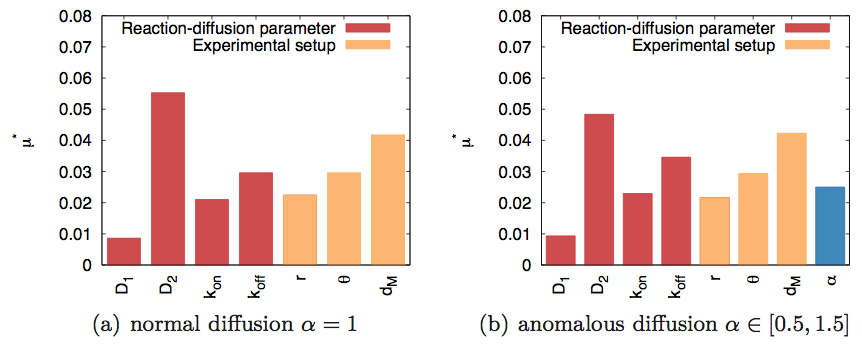
Fluorescence recovery after photobleaching (FRAP) is a widespread technique used to determine intracellular reaction and diffusion parameters. In recent years there was a resurging interest in FRAP applications, due to technical advances and an increasing number of mathematical models for analysis. However, care has to be taken when inverting parameters from such data. We study potential influences on FRAP acquisition and analysis like initial fluorescence distribution, membrane passage, and geometrical aspects.
Monte-Carlo simulations are employed for the investigation of reaction- diffusion processes to additionally include cases in which no analytical description is available. To assess the importance of influencing factors we apply a sensitivity method based on Elementary Effects providing an esti- mate for the global parameter space.
The combination of simulations and sensitivity measure helps to predict ranges of parameters used in acquisition and analysis for which a reliably inversion of reaction-diffusion parameters is possible. Using this approach we show that FRAP data are highly susceptible to misinterpretation. However, by identifying the parameters of susceptibility, our analysis provides the means for taking measures to significantly improve FRAP data interpretation and analysis.
Project Members: Juliane Mai,
Sabine Attinger
, Saskia Trump
From contaminants to cellular response - Gene- and Protein network modeling
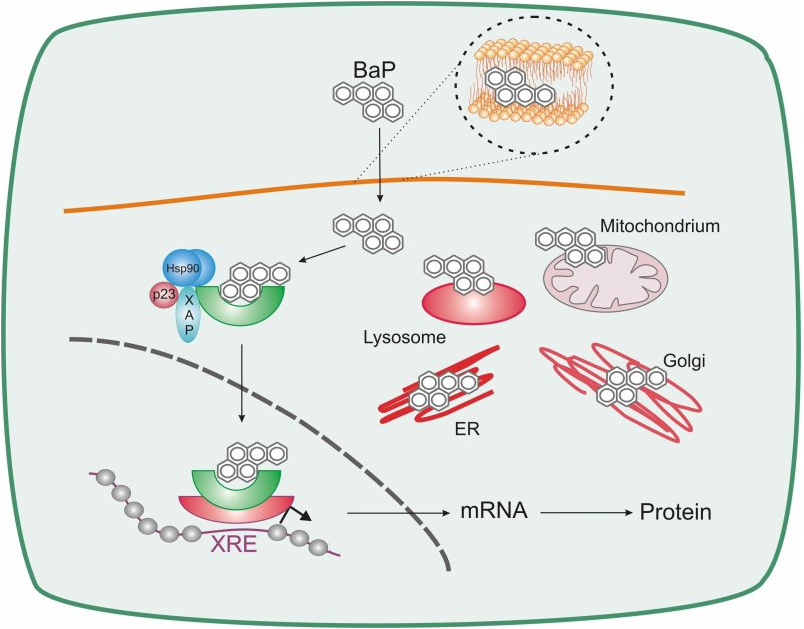
Hepa1C1C7 cells exposed to selected BaP concentration and time periods, show a differential behavior in terms of gene and protein expression. In order to develop an understanding of the underlying gene/protein network, a modeling method has been developed that reverse engineers the gene/protein networks given the expression data. The method bridges the continuous and discrete modeling approaches, through the so called Zhegalkin Polynomials that are continuous representations of Boolean functions. The method computationally comprises of solving a discrete optimization problem and renders a Zhegalkin Polynomial model corresponding to each gene/protein. These predictive models are very helpful in providing an insight into the connectivity structure of the network.
Contact: Saadia Faisal,
Sabine Attinger
Teaching & more
- Mathematical methods and physical principles
Homepage
University of Potsdam, Institute of Earth and Environmental Science-Geoecology, Master of Science in Climate, Earth, Water, Sustainability
- Mathematical methods in Geoecology (only in German)
Homepage
University of Potsdam, Institute of Earth and Environmental Science-Geoecology, Master of Science in Geoecology
- Introduction to Sensitivity Analysis of environmental models
Intranet
UFZ Leipzig, Internal Further Education Programme
- Geoecological Field Course, 2019: Hydrochemistry & Climatology
Homepage
University of Potsdam
- Machine Learning Café
Homepage
UFZ Leipzig, weekly internal activity for Machine Learning enthusiasts
- PhD-Team Data Science
Homepage
UFZ, internal activity for PhD students

